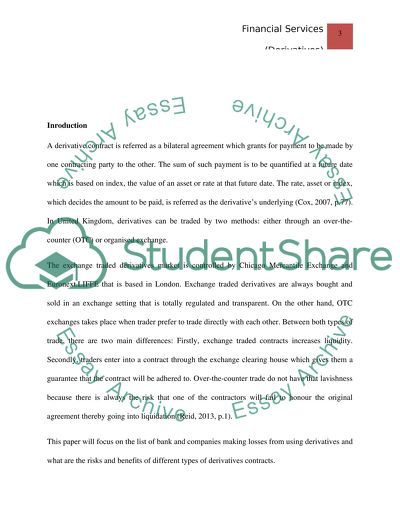Cite this document
(“Financial services ( Derivatives ) Essay Example | Topics and Well Written Essays - 1750 words”, n.d.)
Retrieved from https://studentshare.org/finance-accounting/1473036-financial-services-derivatives-
Retrieved from https://studentshare.org/finance-accounting/1473036-financial-services-derivatives-
(Financial Services ( Derivatives ) Essay Example | Topics and Well Written Essays - 1750 Words)
https://studentshare.org/finance-accounting/1473036-financial-services-derivatives-.
https://studentshare.org/finance-accounting/1473036-financial-services-derivatives-.
“Financial Services ( Derivatives ) Essay Example | Topics and Well Written Essays - 1750 Words”, n.d. https://studentshare.org/finance-accounting/1473036-financial-services-derivatives-.


